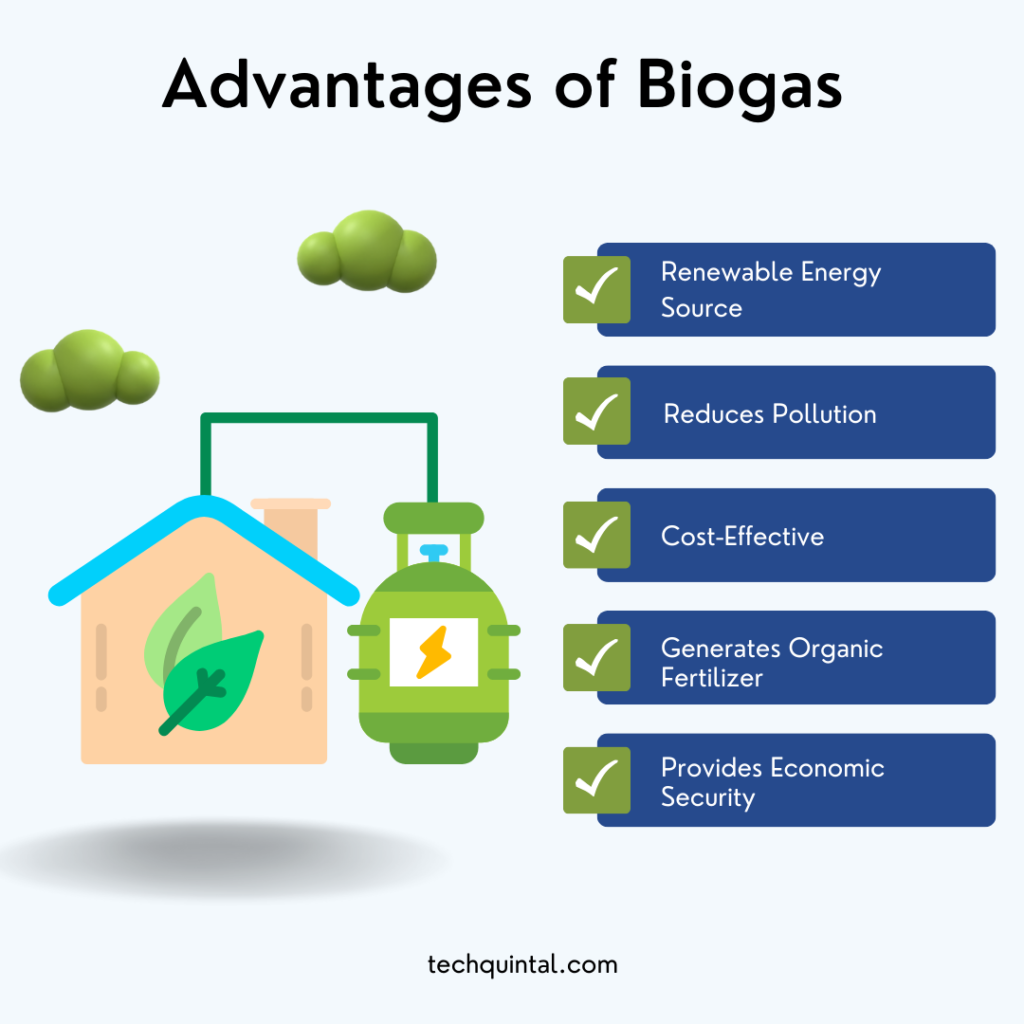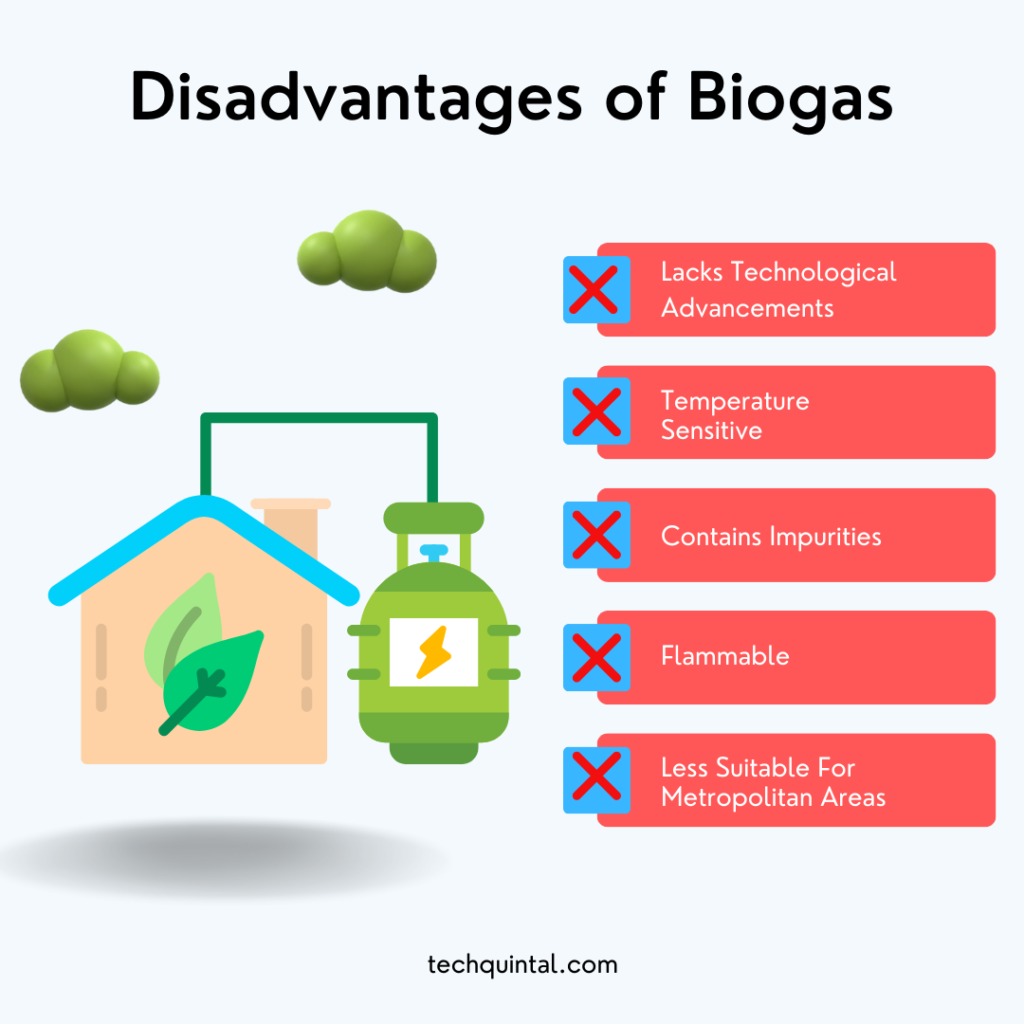
The plethora of environmental problems that we are currently facing has left us with no option but to become more environmentally conscious. We cannot solve all these problems right away, but we can ensure that our actions have minimum impact on our surroundings. The use of biogas as fuel is one such green energy technological solution with distinct advantages and disadvantages. It is a fuel created from organic matter such as crop residue, wastewater, food waste, and livestock waste which are broken down by microorganisms in the absence of oxygen. This process is popularly known as anaerobic digestion.
Why Biogas?
You might wonder why biogas and not other fuels. Firstly, biogas is not only environmentally friendly but also a renewable energy source. Secondly, it is generated from waste materials that otherwise are discarded and cause serious environmental and health issues.
Lastly, our energy demands are increasing and biogas is helping us to fulfill them while reducing our reliance on fossil fuels.
Now that we have a brief overview of biogas, it’s time we explore its pros and cons.
Advantages of biogas

Biogas not only produces energy but the byproduct “digestate” can also be utilized as organic fertilizer. The following are other benefits of biogas.
It is a renewable energy source
As we mentioned earlier, biogas uses materials that otherwise go to waste. Considering humans and animals will keep producing waste, biogas is a renewable energy source. Unlike non-renewable fossil fuels such as oil and coal, the raw materials for biogas production are not going to be exhausted.
Also, with the extraction of fossil fuels, there is significant damage to landfills and the ecosystem. But there’s no such environmental damage with biogas as the materials utilized are those that already exist.
Biogas reduces pollution
Along with being a renewable energy source, biogas decreases pollution by removing the abundant supply of waste from the environment. If kept unchecked, this waste can contribute to nitrogen pollution. Also, when they are discarded in the landfills they contaminate the underground water and spread a foul smell.
With the anaerobic digestion of biogas, the pathogens and parasites that otherwise cause waterborne diseases are deactivated. To sum up, biogas utilizes waste which in turn lowers pollution.
It is cost-effective
The installation of a biogas system requires very little investment. The production process is cost-efficient and quite easy to set up. And the best part is it reduces your gas and electricity bills. Also, the raw materials for biogas production are free. The household generates waste daily, and they can simply use them to produce biogas.
Furthermore, areas, where the supply of electricity or fuel is limited, can easily set up biogas plants and reduce their dependence on conventional energy sources.
It generates organic fertilizer
With anaerobic digestion, the byproduct “digestate” is generated that is rich in nutrients. When used as fertilizers the crops easily absorb these nutrients. The core nutrients of digestate stimulate crop growth. It also improves the efficiency of soil by helping it loosen which is conductive to form soil microbial activity.
Additionally, it has biologically active substances that kill pests. All these benefits make it a better organic option in fertilizers, increasing the ROI (return on investment) for the farmers.
Biogas provides economic security
Not every country has fossil fuel reserves, so they have to import them. This causes a dent in their economy. In such cases, instead of importing, the countries can switch to biogas production. That way, they won’t have to depend on importing gas or fertilizers.
The manure and organic residue will be treated well in the biogas plant to produce renewable energy that can be converted into heat and electricity. Furthermore, the organic fertilizer produced can benefit the environment in the form of reduced odors and reduction of pathogens.
Disadvantages of biogas

Undoubtedly, the merits of biogas exceed the drawbacks of biogas, but to be well-versed in the topic, let’s explore its downsides.
It lacks technological advancements
The implementation of biogas plants at a small scale works excellently. But when it comes to implementation on a large scale, there are many difficulties. The main reason behind this is the lack of technological advancements in biogas production plants.
There is no new technology for simplifying and improving the process of biogas generation. More investment and advancements are required to make biogas production efficient on a large scale for the large population. However, the governments are investing in other more developed alternatives for renewable energy such as solar and wind.
Biogas is temperature-sensitive
In biogas production, bacteria play an important role in digesting food waste. However, the problem is that the fermentation takes place at an optimal temperature of about 37 °C. This makes the process dependent on the weather.
The same is true with other renewable energy sources. Most are highly dependent on climate-related factors. With biogas production, external heat is required in cold climates to ensure the proper functioning of the digester and a consistent supply of biogas.
It contains impurities
Despite refinement and compression, there are still impurities in biogas. Therefore, it can be easily used for kitchen stoves and lamps. However, it cannot be used as biofuels for automobiles. The reason is that the impurities can corrode the metal parts of the engine and damage the vehicles. This will eventually increase the cost of repair and maintenance.
Biogas is flammable
Biogas produces a deep blue flame and can be used as an energy source. But the problem is that it contains high methane content, typically 50 to 60%. This makes it flammable and unstable. It is essential to handle biogas carefully as it is prone to explosions in a mixture of air.
It is less suitable for metropolitan areas
By now, you might have guessed the reason for its unsuitability in urban areas. Biogas production requires a huge amount of raw materials that are crop materials or waste manure. This is impractical in metropolitan areas. Biogas production is suitable for rural or semi-urban areas. Also, since wastes are involved, the biogas plant emits a foul odor. Therefore, the plants are built away from residential and industrial areas.
Interesting facts about Biogas
- Biogas is a type of biofuel that is naturally produced from the decomposition of organic waste.
- It primarily consists of methane (50 – 75%) and carbon dioxide (25 – 50%).
- The process used to produce biogas is called anaerobic digestion, which occurs in the absence of oxygen.
- Biogas can be used for many things such as heating, electricity generation, and as a green alternative to natural gas for cooking.
- The byproduct of biogas production, called digestate, can be used as a high-quality fertilizer.
- It’s a renewable energy source, as it’s produced from materials such as agricultural waste, manure, municipal waste, and plant material.
- Using biogas can help reduce greenhouse gas emissions by capturing methane, a potent greenhouse gas, that would otherwise be released into the atmosphere.
- Biogas production helps in waste management by reducing the amount of waste going to landfill.
- Despite its benefits, biogas production faces a lot of challenges like high initial setup costs and the need for careful management to avoid contamination.
- Biogas plants are scalable, from small home-use systems to large commercial plants.